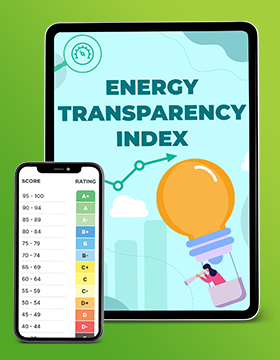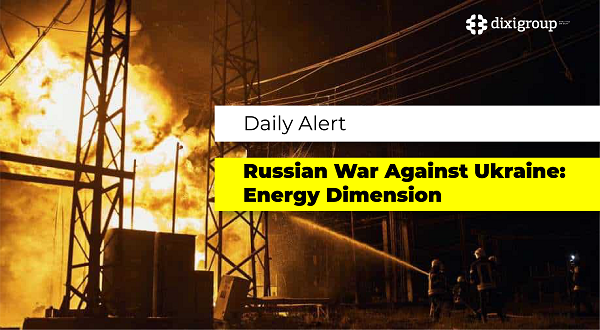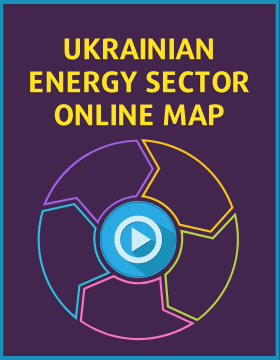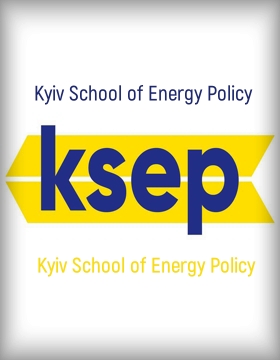Nuclear energy attracts private investors
A strategic industry in search of a balance between state security and private benefit

Private investors are increasingly interested in nuclear energy, a strategic industry that is under strict state regulation due to security risks and the need to control the spread of nuclear materials. For years, it was dominated by state-owned companies such as Ukraine’s Energoatom operator. Expensive, long-term, and risky projects required government oversight and financing. But new technologies are driving radical changes that are attracting private investors to nuclear generation.
Ukrainian Energy examined how relevant this trend is for Ukraine and learned about the changes taking place in nuclear energy regulation in the United States, whose companies are interested in sharing their experience and technologies on the Ukrainian market.
“State Statement”
Energy Minister Herman Galushchenko believes it is appropriate to attract private investment in the construction of new nuclear power units in Ukraine. But to implement this in practice, national legislation needs to be adapted.
“In fact, there are many private nuclear power plants in the world. We should do the same in Ukraine,” he said during a discussion on the role of our state in the “green” industrial transformation of Europe at an event of the DIXI Group think tank at the Ukrainian Recovery Conference in Rome.
The minister predicts that adopting the necessary legislation to attract private capital to the nuclear industry will be “not easy from a political point of view,” but the government must do it.
In addition, he spoke in favor of developing all types of generation for the stability of the energy system instead of contrasting them with each other. “Nuclear projects are quite complex, they require a lot of time for implementation, so other generating capacities should be developed in parallel. For example, if you need time to build one nuclear power unit, then at the same time you can build more renewable energy sources. But believe me, we need baseload generation, which is nuclear power plants, especially for industrial consumers. We will not be able to survive without it,” Herman Galushchenko clarified his position.
His statement on private investment in the construction of Ukrainian nuclear power plants did not go unnoticed by experts who are monitoring the plans of the National Nuclear Power Generating Company (NNPC) Energoatom to build new reactors at the Khmelnytskyi NPP.
Thus, the co-founder of the Association of Nuclear Industry Specialists, Maksym Pyshny, believes that Herman Galushchenko made a “truly statesmanlike statement at the URC, the implementation of which could give a powerful impetus to the development of Ukraine’s nuclear power industry.” The expert is convinced that this process “cannot be implemented without attracting private capital” or even the creation of new private nuclear operators of NPPs. But how successful such strategic innovations will be will depend on the effectiveness of specific steps on the way to implementation.
“No private investor will come to Ukraine during daily large-scale combined mortar and missile attacks. Therefore, I only see PR [from the Ministry of Energy] to match the trends,” noted industry expert Olga Kosharna.
“Of course, during the war in Ukraine, none of the private investors will begin the physical construction of nuclear reactors or any basic generation, there will be about two more years of preparatory work before this stage begins,” agreed Maksym Pyshny. “But the fact that the Ukrainian government is already moving away from exclusively state-owned nuclear generation in the future is a real step forward. The main thing is that this is not just a slogan, but a truly statesmanlike impetus for action and implementation of the statement,” he concluded.
Nuclear innovations
Private investors, who are interested in predictability and a quick return on invested capital, have been ignoring nuclear energy for many years. The construction of traditional nuclear power plants requires quite high costs, which are measured in billions of dollars, at least ten years for the implementation of the project and an even longer payback period. But with the advent of new nuclear technologies and government support for the development of nuclear power plants to decarbonize the energy sector, the situation has begun to change.
This is primarily about the implementation of innovative small modular reactor (SMR) projects, which can become an alternative to traditional large nuclear power plants and outdated assets with high carbon emissions such as coal-fired thermal power plants (TPPs).
According to Neil Wilmshurst, vice president of the Electric Power Research Inctiture (EPRI), “SMR technology, which provides for faster and cheaper construction of nuclear generation, can revolutionize the industry, potentially reducing the production costs of the next generation of nuclear power plants and helping countries and businesses achieve their goals for reducing carbon emissions.”
The potential of MMR has already come to the attention of Ukrainian companies. In the fall of 2023, Rinat Akhmetov’s DTEK holding announced plans to “decarbonize” its coal-fired power plants, turning them into sites for the construction of MMR. To develop the project, DTEK attracted specialists from the American EPRI institute and created the company Denetek. “This is an exclusive partnership between DTEK Group, the largest private power generation company in Ukraine, and the American decarbonization company Eney,” its website says.
Eney is a company created in January 2023 by the former head of NJSC Naftogaz of Ukraine Andriy Kobolev together with a lawyer and diplomat, former head of the energy department of the US Embassy in Ukraine, Suriya Jayanti. “Based in the US, Eney leverages the business, technical and political experience of its founders… We will focus on the energy sector and champion American technologies,” the corporate website says.
Denetek believes that Ukraine has significant potential for successful deployment of MMR due to such competitive advantages as the state’s commitment and proven experience in nuclear energy, qualified human resources, the desire for post-war reconstruction and modernization of the economy, and integration with the European energy system.
Security and deregulation
The American experience can be useful for Ukraine not only in terms of technology implementation, but also in a broader context - deregulation of the nuclear industry. “Nuclear energy in the US is an example of how reviewing outdated and burdensome rules can give impetus to investment and innovation,” notes the business publication The Wall Street Journal in a recent publication dated July 11.
“Meeting outdated safety standards is one of the barriers to why building nuclear power plants in the United States has been so expensive and slow. Between 1954 and 1978, the country approved 133 reactors. Then, officials granted permits for only a few. There are many reasons for this, but a culture of over-caution at the Nuclear Regulation Commission (NRC), created in 1975 and reinforced after the Three Mile Island meltdown in 1979, is arguably one of the main ones,” the WSJ reports.
To revive the nuclear industry, the Trump administration in May 2025 issued an executive order to comprehensively review and update the NRC’s rules and guidelines. This is part of the White House’s efforts to stimulate economic growth through deregulation. “At the same time, deregulation is not always a good thing. Regulations protect the environment and national security, prevent crime and discrimination. But whether a certain norm is worth the cost is often a matter of subjective judgment,” the WSJ authors write.
They note that in the United States, it was excessive caution that created powerful barriers to the development of nuclear power plants after the Three Mile Island accident, which frightened the public. This prompted state regulators to tighten safety requirements even for reactors during the construction phase, which cooled the interest of investors and energy companies in nuclear power for years.
Over the past decade, both Democratic and Republican administrations in the White House have tried to revive nuclear power plants, in particular because they do not produce greenhouse gases. Last year, the US Congress almost unanimously passed the Nuclear Advancement Act. It also allowed the Three Mile Island nuclear power plant to resume operation after its conservation.
Incentives and Opportunities
However, the cost of building nuclear power plants remains a major obstacle to new projects in the United States. Electricity from wind, solar, and natural gas is becoming cheaper as efficiency innovations continue to be introduced.
At the same time, “any component that goes into a nuclear reactor that is relevant to safety has to pass nuclear safety certification to extremely stringent quality standards,” says Ted Nordhaus, co-founder of the Breakthrough Institute (an organization that advocates for modernization and technological development to solve environmental problems). He is confident that this is holding back the proliferation of nuclear power plants and MMRs.
For example, in 2020, the startup Oklo applied for a license to build and operate an MMR called “Aurora.” It was not until 2022 that the NRC rejected this application due to “significant gaps in information.” Oklo CEO Jacob DeWitt says, “Our system has built-in passive safety systems that don’t require traditional safeguards like large reactors.” The NRC’s processes and requirements “were not relevant to what we were trying to do.” Oklo hopes to submit a new application by the end of the year. DeWitt says the NRC appears to be undergoing “a significant modernization in the way it works” under President Donald Trump.
NRC officials say they have already reformed their internal processes. They cite the safety review of two Kairos Power reactors in Tennessee as evidence. After Trump’s executive order setting tight deadlines, the NRC accelerated the review of environmental and safety documentation for a reactor in Wyoming from the Bill Gates-backed TerraPower company, as well as for the MMR for the Tennessee Valley Authority.
“We are an organization that is primarily responsible for safety,” says Mike King, acting executive director of the state nuclear regulator, the NRC. “But at the same time, today’s NRC is not the same commission that it was even yesterday.”
Therefore, American businesses and technology companies that seek to use nuclear energy to power powerful data centers are counting on the revival of nuclear generation in the United States and the construction of new capacities that will satisfy consumers’ thirst for energy. Among the companies that would like to take advantage of this opportunity are Holtec and Westinghouse, which are partners of Ukraine in the modernization of the nuclear industry. They are private in form of ownership and own nuclear power plants, so in the future they will be able to share not only experience in implementing new technologies, but also in restructuring state regulations.
Svitlana Dolinchuk, specially for "Ukrainian Energy"








